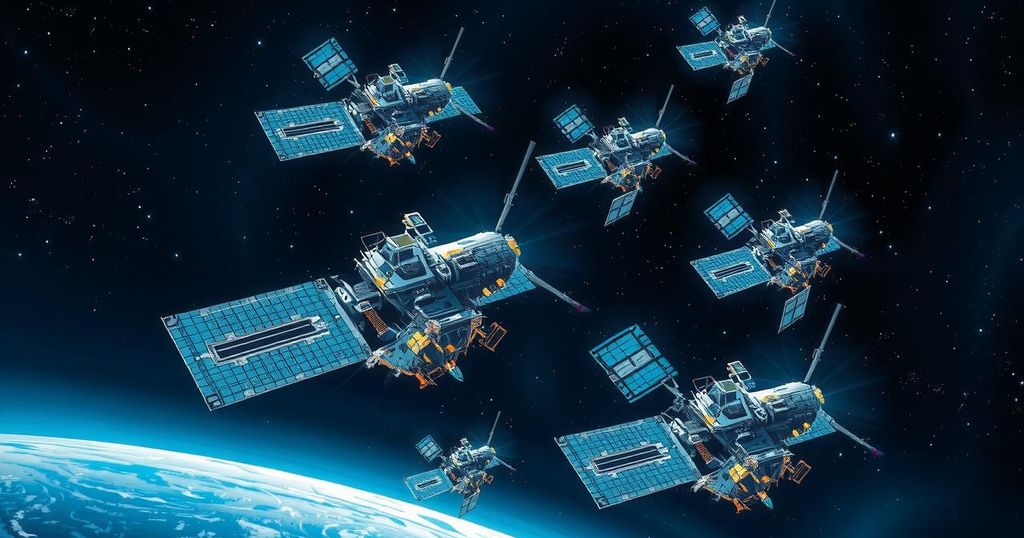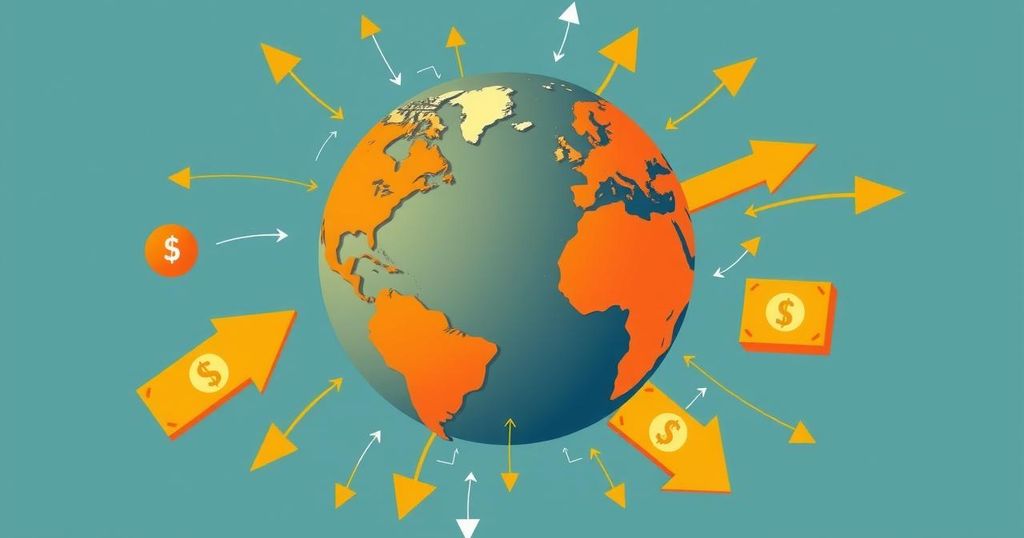Trump’s Reciprocal Tariffs Target Multiple Nations as Trade Relations Shift
President Trump is set to impose reciprocal tariffs on multiple countries, focusing on 10 to 15 with significant trade imbalances. India is contemplating reduction of duties on U.S. auto parts. While fears of a trade war emerge, Trump sees tariffs as essential for negotiation and economic protection. Upcoming tariffs will affect various sectors, as the administration aims to improve U.S. trade standing and stimulate domestic production.
President Trump has announced intentions to impose reciprocal tariffs targeting multiple nations, stating, “You’d start with all countries,” while aboard Air Force One. White House economics adviser Kevin Hassett specified that the focus would likely be on 10 to 15 countries experiencing significant trade imbalances, although specific nations have yet to be disclosed.
In a parallel development, Indian officials are contemplating a reduction or complete removal of customs duties on U.S. auto parts, a strategic move aimed at enhancing trade relations without severely affecting domestic industries. Trump regards tariffs primarily as a protective measure for the U.S. economy against unfair competition, additionally using them as leverage in trade negotiations.
Despite Trump’s strong advocacy for these tariffs, there are mounting concerns about the potential for a trade war, which could adversely affect financial markets and trigger fears of a recession in the United States. The President remains steadfast in his commitment to implementing these tariffs, stating he would match any duties imposed by other countries on U.S. exports.
Trump has also suggested he may adjust tariff rates to be lower than those currently imposed by several countries, indicating a potential approach towards diplomacy. His planned import taxes, which include reciprocal tariffs, are aimed at aligning with rates from countries like the European Union, South Korea, Brazil, and India.
The president has recently introduced a 25% tariff on auto imports, citing the U.S.’s unfavorable trade standing. He proclaimed, “This is the beginning of Liberation Day in America,” highlighting intentions to charge countries for doing business in the U.S.
In response to inquiries regarding price increases on imported vehicles, Trump expressed optimism, asserting, “I hope they raise their prices, because if they do, people are gonna buy American-made cars.” Furthermore, he hinted at possible flexibility in tariff implementations.
Nonetheless, upcoming tariffs are set to affect multiple sectors, including pharmaceuticals, copper, and lumber, while maintaining a 25% tariff on oil imports from Venezuela. Additionally, tariffs on China due to its involvement in fentanyl production are currently at 20%, while separate tariffs have been applied to imports from Canada and Mexico.
Some aides view these tariffs as essential negotiation tools while others emphasize the potential revenue could alleviate the federal budget deficit. Commerce Secretary Howard Lutnick remarked that these tariffs will incentivize other nations to treat the U.S. with greater respect.
In summary, President Trump’s proposal for reciprocal tariffs encompasses a broad range of nations, focusing on those with significant trade imbalances. India is considering tariff reductions on U.S. auto parts to bolster trade ties. Concerns regarding a possible trade war persist, but Trump sees tariffs as leverage for improving trade conditions. Flexibility in his approach is suggested, although additional tariffs are forthcoming in multiple sectors. Ultimately, these strategies are aimed at promoting U.S. economic interests while potentially invigorating domestic industries.
Original Source: m.economictimes.com








Post Comment